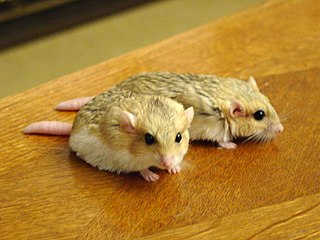This page is based on this
Wikipedia article Text is available under the
CC BY-SA 4.0 license; additional terms may apply.
Images, videos and audio are available under their respective licenses.
Cover or covers may refer to:
Norman or Normans may refer to:

A futon (布団) is the Japanese traditional style of bedding.

An unconformity is a buried erosional or non-depositional surface separating two rock masses or strata of different ages, indicating that sediment deposition was not continuous. In general, the older layer was exposed to erosion for an interval of time before deposition of the younger, but the term is used to describe any break in the sedimentary geologic record. The significance of angular unconformity was shown by James Hutton, who found examples of Hutton's Unconformity at Jedburgh in 1787 and at Siccar Point in 1788.

Floriculture, or flower farming, is a discipline of horticulture concerned with the cultivation of flowering and ornamental plants for gardens and for floristry, comprising the floral industry. The development, via plant breeding, of new varieties is a major occupation of floriculturists.
Sheet or Sheets may refer to:
Litter is trash in small portions thrown inappropriately in a public place.

The fat-tailed gerbil is a rodent belonging to subfamily Gerbillinae. It is the only member of the genus Pachyuromys. These rodents are the most docile species of the Gerbil subfamily. It is also called the duprasi gerbil. Other common English names: fat-tailed jird, fat-tailed rat, beer mat gerbil. Names in other languages: abu lya in Egyptian Arabic, and adhal alyan in Standard Arabic, souris à grosse queue (French), Fettschwanzrennmaus (German), fedthale mus (Danish), rasvahäntägerbiili (Finnish), dikstaartgerbil (Dutch). They have a fluffy and soft fur. Fat-tailed gerbils are very new on the pet market.

In geology, cross-bedding is layering within a stratum and at an angle to the main bedding plane. The sedimentary structures which result are roughly horizontal units composed of inclined layers. The original depositional layering is tilted, such tilting not being the result of post-depositional deformation. Cross-beds or "sets" are the groups of inclined layers, which are known as cross strata.

Beds are the layers of sedimentary rocks that are distinctly different from overlying and underlying subsequent beds of different sedimentary rocks. Layers of beds are called stratigraphy or strata. They are formed from sedimentary rocks being deposited on the Earth's solid surface over a long periods of time. The stratigraphy are layered in the same order that they were deposited, allowing a differentiation of which beds are younger and which ones are older. The structure of a bed is determined by its bedding plane. Beds can be differentiated in various ways, including rock or mineral type and particle size. The term is generally applied to sedimentary strata, but may also be used for volcanic flows or ash layers.

Fawn is a light yellowish tan color. It is usually used in reference to clothing, soft furnishings and bedding, as well as to a dog's coat color. It occurs in varying shades, ranging between pale tan to pale fawn to dark deer-red.
The first recorded use of fawn as a colour name in English was in 1789.
A blanket is a large, usually rectangular piece of thick bedding material.
Sedimentary structures include all kinds of features formed at the time of deposition. Sediments and sedimentary rocks are characterized by bedding, which occurs when layers of sediment, with different particle sizes are deposited on top of each other. These beds range from millimeters to centimeters thick and can even go to meters or multiple meters thick.
Pediculosis corporis is a cutaneous condition caused by body lice that lay their eggs in the seams of clothing.









